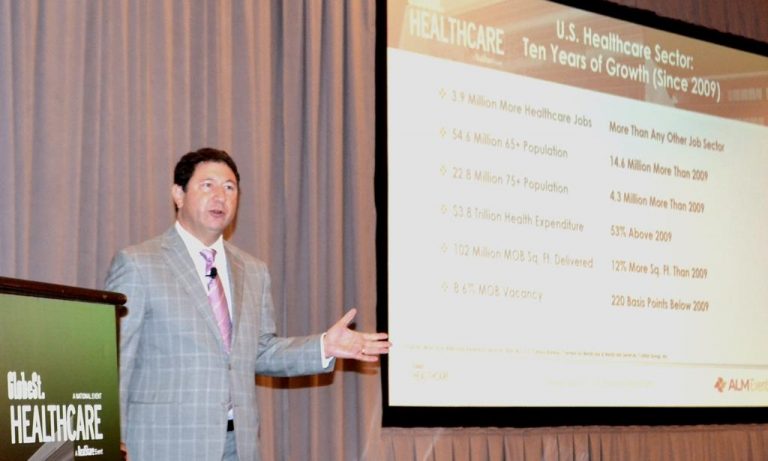Researcher John Chang provides highlights at GlobeSt. HRE conference
 SCOTTSDALE, Ariz. — Sure, there are some potential headwinds facing the medical office building (MOB) development and investment sector, including a looming economic slowdown and political uncertainty in Washington, which could result in change, possibly after the 2020 election, to the country’s healthcare policy.
SCOTTSDALE, Ariz. — Sure, there are some potential headwinds facing the medical office building (MOB) development and investment sector, including a looming economic slowdown and political uncertainty in Washington, which could result in change, possibly after the 2020 election, to the country’s healthcare policy.
There are also potential negatives facing the sector due to rising construction costs, the rising cost of healthcare itself, labor shortages, both in healthcare and the building trades, and advances in telemedicine, which could possibly decrease the demand for brick-and-mortar medical facilities.
However, such potential negatives cannot compare to the many upsides that MOBs currently provide and will continue to provide to health systems, developers and investors in the years to come, according to John Chang, senior VP, national director of research services for Marcus & Millichap Inc. (NYSE: MMI).
Mr. Chang gave a presentation titled, “Looking Ahead: Healthcare Forecast 2025,” during the annual GlobeSt. Healthcare Real Estate (HRE) Conference held at the Fairmont Princess in Scottsdale on Dec. 3-4. More than 300 professionals attended the two-day event that included a ceremony for the winners of the annual HREI Insights Awards.
Undoubtedly, Mr. Chang’s optimism for the MOB sector’s prospects stems from the country’s aging population, which will continue to drive demand for medical office space. He also noted that MOBs are considered a recession-resistant product type, what with their strong, recession-resistant tenants and the healthcare system’s ongoing efforts to move more and more services to outpatient facilities, such as MOBs.
“Healthcare demand, as many of you know, is really all about demographics,” Mr. Chang told the crowd at the opening session on Dec. 4. “And when you look at the aging population, over the next five years we’re going to add 11 million people over the age of 65. That’s over 6,000 people turning 65 per day. When you look at 75-plus, it’s growing by 6.5 million over the next five years.
“And that’s accelerating compared to where we’ve been over the last five years,” he added, “which has been pretty strong growth. So, we have a lot of momentum, we have a lot of tailwinds that are supporting medical demand and healthcare.”
The full content of this article is only available to paid subscribers. If you are an active subscriber, please log in. To subscribe, please click here: SUBSCRIBE





